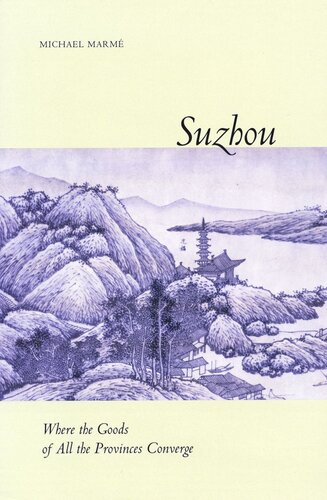

Most ebook files are in PDF format, so you can easily read them using various software such as Foxit Reader or directly on the Google Chrome browser.
Some ebook files are released by publishers in other formats such as .awz, .mobi, .epub, .fb2, etc. You may need to install specific software to read these formats on mobile/PC, such as Calibre.
Please read the tutorial at this link: https://ebookbell.com/faq
We offer FREE conversion to the popular formats you request; however, this may take some time. Therefore, right after payment, please email us, and we will try to provide the service as quickly as possible.
For some exceptional file formats or broken links (if any), please refrain from opening any disputes. Instead, email us first, and we will try to assist within a maximum of 6 hours.
EbookBell Team

4.8
44 reviewsBefore Shanghai, there was Suzhou: a city of canals and commerce, gardens and scholars, the largest noncapital city on earth between 1400 and 1850. This book shows how, though Suzhou entered the Ming dynasty defeated and suspect, interactions between the imperial state and local elites gave rise to a network of markets that fostered high-quality local specialization. Population growth and economic expansion followed, as did the acceptance of conspicuous consumption, critical distance from the imperial state, and the dissolution of traditional barriers between scholar-officials and merchants. These developments shaped Suzhou’s artistic and literary creativity, and made possible the continued success of its sons in the imperial examinations. Thus political success, cultural creativity, and economic centrality, the author argues, enabled Suzhou not just to influence the region, but to reshape the empire.